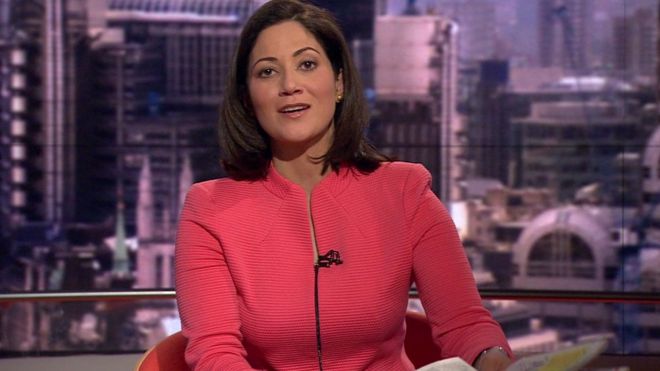Channel 4 uses cloud to make more sense of data
The TV company is already a cloud user but is now looking to beef up its analytics capability


Channel 4 is one of the pioneers when it comes to cloud computing. Having used the cloud for five years now, it was one of the earliest household names to turn to cloud when it opted for Amazon’s EC2 to power some of its websites.
Cloud technologies are now at the core of the company’s ethos. But the use of cloud is also closely allied to another one of Channel 4’s pet projects, one that will have a great mpact in broadcasting in the future and one that has been very much driven by its chief executive David Abraham.
Data, data, data
The initiative stemmed from the time when Abraham took over as Channel 4's head honcho. He said there were three things that would drive the future of the company: data, data and more data. This is something Channel 4 has been looking to explore, with the ultimate aim of becoming a data-centric organisation.
Because the company was already some way down the cloud route, it made sense for it explore cloud as a way of improving the way it handled analytics.
Channel 4 already had an existing analytics division that had proved adequate for the way it had previously handled data. This was based around a well-established business intelligence platform, using technologies from Business Objects, IBM and Oracle. But, as Bob Harris, Channel 4's CIO, points out, when it came to a working out a way to improve the analytics platform to handle the greater demands that were being placed on it the firm hit a wall.
The existing system which involved, as Harris explains,”proprietary tools on proprietary Sun hardware, which is running proprietary software,” was not going to be practicable.
He says that the easiest thing to do would be to lineally scale the platform. But, scaling to the level required would have been prohibitively expensive and it was clear that this was not the answer to the problem.
Sign up today and you will receive a free copy of our Future Focus 2025 report - the leading guidance on AI, cybersecurity and other IT challenges as per 700+ senior executives
Harris' interntions are generally slanted towards open source and he started to explore the possibilities that this offered when moving to a big data project. “We’d been looking at open source data anaytlcs for years (Hadoop and Hive) running initially with Cloudera and we were of the mind that these were the sort of technologies we'd be working with," he said.
Harris didn't expect there to be a radical overhaul. “We find traditional BI and analytics are very complementary. I see Hadopp as ETL (extract, transform and load) on steroids," he added.
An AWS partnership
Channel 4 had enjoyed a good experience of working with Amazon and wanted to continue that relationship. It had started by placing a few of its websites on Amazon, but had now moved on so that all its websites used the technology. Earlier this year, Channel 4 ran its first fund-raising initiative. “If I'd done that anywhere else but Amazon I’d have been worried,” says Harris. “I’d have had to start it a year earlier than I did and spend a lot of cash on it.”
Given this history it made sense to explore the possiblity of using Hadoop in conjunction with Amazon."We had a conversation with Peter Sirota's (general manager of AWS Elastic Map Reduce) team about using EMR and it made sense for us,” says Harris.
"We looked at the numbers of doing it in the cloud. We looked at the cost of running EMR against an in-house cluster. When we examined our web workloads, we’ve seen significant cost reductions in running in cloud."
The key issue for Channel 4 is scalability: it could be running websites that have a massive audience reaction and the system needs to be able to cope with those sort of workloads. It's never going to be the case that it's easy to predict the levels of demand – which is why cloud has proved to be the winner.
“When you don’t need that flexibility and you have predictability and long lead time, it might be better to do it in-house,” says Harris.
Greater insight
With the system in place, Channel 4 is able to gather much more accurate data about its viewers (and readers, given that the websites are as much a part of the business now as the broadcasting output is).
"Most of the data that we're generating is data from public-facing products – websites and video-on-demand. We have nine million registered users – over half of all interactions are from people who we know something about,” says Harris.
As Harris points out, the more the Channel knows about its customers, the better the ad targeting. “More relevance means we get more money,” he says. There's also a secondary motive, by better targeting, the company can drive up revenue by increased usage. “It's something we see in video-on-demand,” says Harris, “Amazon and NetFlix are doing it.”
The technology is just one part of the equation. A bigger challenge in some ways is feeding the data gathered back into the creative part of the business. “Humans are very resistant to change”, says Harris.
Channel 4 is a company that is settled on cloud – and Amazon in particular (there is no alternative cloud supplier). Harris doesn't have much truck with the idea of private cloud suppliers either. “I test everything for cloud against three rules: for pay-as-you-go, self-provisioning and scalability,” he says.
If it doesn't match up against those criteria, it's not cloud in Harris' eyes. He thinks that private cloud is very much a transitionary technology towards public cloud.
Harris is fully committed to moving along further with Amazon Web Services. Having embraced the technology for the company's websites, it's now being used to gather data and is increasingly part of Channel 4's armoury. “It used to be tactical,” says Harris, “but it's now very much part of our strategy.”
Max Cooter is a freelance journalist who has been writing about the tech sector for almost forty years.
At ITPro, Max’s work has primarily focused on cloud computing, storage, and migration. He has also contributed software reviews and interviews with CIOs from a range of companies.
He edited IDG’s Techworld for several years and was the founder-editor of CloudPro, which launched in 2011 to become the UK’s leading publication focused entirely on cloud computing news.
Max attained a BA in philosophy and mathematics at the University of Bradford, combining humanities with a firm understanding of the STEM world in a manner that has served him well throughout his career.
-
 What the fragmentation of UC means for the channel
What the fragmentation of UC means for the channelIndustry Insights If communications are becoming fragmented, what does that mean for MSPs and VARs?
-
 How SMBs can DIY their IT implementation and support
How SMBs can DIY their IT implementation and supportFeature For some small and medium-sized businesses, the third-party expertise and support might be out of reach. What’s the alternative?
